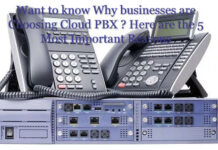If you have a small business or manage a small fleet, you have fewer vehicles to keep track of. But that doesn’t mean your job is any less challenging or time-consuming. In fact, smaller fleet managers deal with many of the same issues as their counterparts in larger fleets and because of these issues, small fleet managers are also increasingly turning to small business fleet tracking software to make their jobs easier.
What Is Fleet Tracking Software?
Fleet tracking software involves using GPS to track and monitor a fleet vehicle’s movements and activities. It involves installing a fleet tracking device on your vehicles that collect diagnostic information. This data can be collected in real-time as well as stored for later review and analysis. Using this data, fleet managers can make strategic decisions to improve fleet operations.
Components of a Small Business Fleet Tracking System
The three main components of a small business fleet tracking system are tracking devices, a tracking server and telematics software.
The first step is to attach GPS fleet tracking devices to every fleet vehicle so that they can capture data. This data is then transmitted to the tracking server where it is stored. Collected data can include a variety of information aside from just location and time such as idling hours, speed, engine temperature, battery status, tire pressure, engine RPM and much more.
The telematics software linked to the GPS tracking device and server uses the stored data to automatically generate reports on a variety of metrics that can be viewed on a user-friendly interface by fleet managers. This is ideal for analysis and decision-making purposes.
Benefits of GPS Tracking Software for Small Fleets
Below are some of the major benefits of GPS tracking software for small fleets:
Improve Fuel Costs
Fluctuating fuel costs will always be a headache for fleet managers because of its volatility and keeping it under control is one of the main challenges facing them daily. Fleet tracking software can give small feet managers insight into their fleet’s fuel usage and that insight can help them reduce fuel spend overall.
You may not be able to control how much fuel costs but you can monitor and reduce the factors that may increase fuel consumption. Some things that increase fuel usage include speeding, excessive idling, harsh acceleration, incorrect tire pressure and so on. Fleet tracking devices can help monitor all of this and help fleet managers determine which drivers in their fleet are, for example, speeding. Then they can put drivers in training to teach them how to drive less aggressively and improve their driving habits. Once they’ve been trained, fleet managers can continue to monitor to see whether the drivers in question have implemented the training.
Optimize Dispatching and Vehicle Utilization
Getting fleet vehicles to their expected locations is vital for small business fleets. With small business fleet tracking software, managers can easily locate their drivers at any point in time during the day and dispatch the nearest driver to a job to reduce time waste as well as fuel spend. Should a driver be struggling to get to a location due to, say, traffic, managers can reroute them appropriately.
Fleet managers can also use GPS tracking to see how long it takes for drivers to get to certain locations as well as how much time they spend at jobs. This information is key to optimizing the time drivers spend on the road. The less time they take to get to a location, the more time they have to focus on jobs or it will give them the ability to take on more responsibility.
Using fleet tracking technology, managers can implement geo-fencing which means you can create virtual boundaries to prevent vehicles from traveling outside of specified areas. This can limit or even eliminate unauthorized vehicle usage as well as theft.
Reduce Maintenance Costs
Having a vehicle out of rotation is an especially big concern for managers of small fleets as this can lead to scheduling disasters because other drivers will have to compensate for that one missing vehicle. This may lower productivity and can potentially lead to dissatisfied customers, something that small businesses cannot afford.
To reduce the chance of this happening, you need to start implementing preventive maintenance such as pre-emptive oil changes, regular tire rotation and so forth. This will help ensure that vehicles can be scheduled to go into the shop at times when you are less busy, keep vehicles well-maintained to reduce the risk of potential breakdowns and give your vehicles a longer lifespan, which is a money-saver.
Fleet tracking software collects data directly from the engine and can provide managers data on oil levels, filters, tire pressure, engine hours and so forth. This will help you anticipate when you need to take a vehicle in for a service before those things become issues that need serious repairs. This way your vehicles will spend less time in the shop and more time on the road.
Improve Driver Safety
Safety is a concern within all fleets, regardless of their size. However, because small fleets usually operate within smaller areas, they have a special duty to keep their community’s roads safe and maintain the relationships they have with the people in those communities. If a small business’ drivers are behaving recklessly on the road and getting into frequent accidents, this reflects badly on the company’s image and can spread negative word-of-mouth.
Small business fleet tracking systems track reckless driver behaviors, such as speeding and harsh braking, that increase the risk of accidents. Whenever these behaviors rear their ugly head, fleet managers can get real-time notifications and then directly communicate with the driver in question that they need to correct their actions immediately.
Provide Accurate ETAs to Customers
Tracking fleets via GPS can provide accurate ETAs, which is helpful for both dispatching purposes and giving customers an idea of when they can expect a product or service. This helps build trust with customers and can be used as a way to differentiate yourself from competitors.
Should a customer call you to enquire about where a driver is, fleet managers can quickly locate them on a map in real-time and give immediate feedback or share the location, which will definitely be appreciated by a customer.










